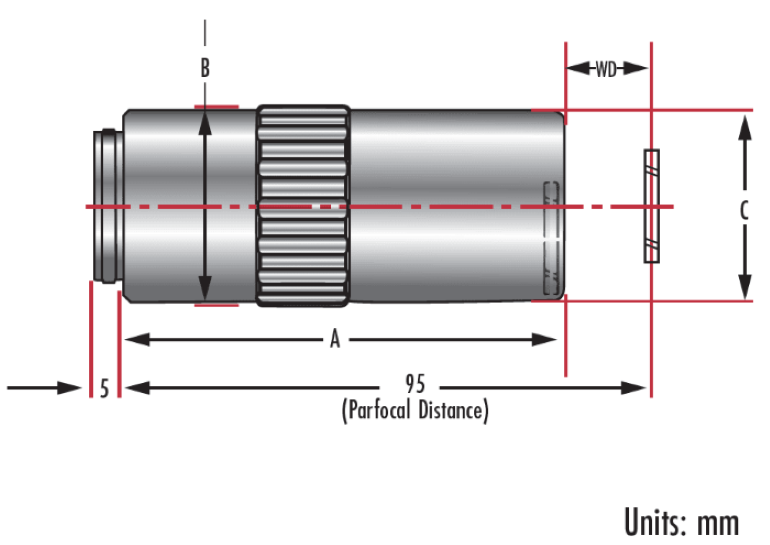
ミツトヨ M Plan NIR, NUV & UV LCD シリーズ 無限補正対物レンズは、標準のM Plan Apo & M Plan Apo SL シリーズ 対物レンズのメリットに、スペクトル領域の向上を組み合わせています。NIR 対物レンズは、480~1800nmまでで補正されており、半導体や光通信の検査、あるいは一般的なNd:YAGレーザーを用いたレーザー切断に最適にします。HR シリーズは、開口数を増やすことで、より小さなスポットサイズやより高い解像力を実現します。ミツトヨ M Plan NIR, NUV & UV LCD シリーズ 無限補正対物レンズは、一般的な液晶ディスプレイガラスの厚さで補正しています。NUV & UV シリーズの対物レンズは、532nm、355nm、266nmのNd:YAGの2倍波、3倍波、4倍波の各々で卓越した性能があります。

| 寸法 | ||||
| M Plan NIR | A (mm) |
B (mm) | C (mm) | 作動距離 WD (mm) |
| 20X, T0.7 | 75.00 | 34 | 32.2 | 20.0 |
| 20X, T1.1 | 75.02 | 34 | 32.2 | 19.98 |
| 50X, T0.7 | 77.74 | 34 | 32.2 | 9.60 |
| 50X, T1.1 | 77.87 | 34 | 32.2 | 17.13 |
| 100X | 82.94 | 34 | 32.2 | 12.06 |
| HR 100X | 85.13 | 39 | 37 | 9.87 |
| M Plan NUV | A (mm) |
B (mm) | C (mm) | 作動距離 WD (mm) |
| 20X, T0.7 | 78 | 34 | 32.2 | 16.96 |
| 50X, T0.7 | 80 | 34 | 32.2 | 14.76 |
| M Plan UV | A (mm) |
B (mm) | C (mm) | 作動距離 WD (mm) |
| 20X, T0.7 | 80 | 34 | 32.2 | 14.98 |
| 50X, T0.7 | 83 | 34 | 32.2 | 12.38 |
1-800-363-1992
もしくは 現地オフィス一覧をご覧ください
クイック見積りツール
商品コードを入力して開始しましょう
Copyright 2025, エドモンド・オプティクス・ジャパン株式会社
[東京オフィス] 〒113-0021 東京都文京区本駒込2-29-24 パシフィックスクエア千石 4F
[秋田工場] 〒012-0801 秋田県湯沢市岩崎字壇ノ上3番地